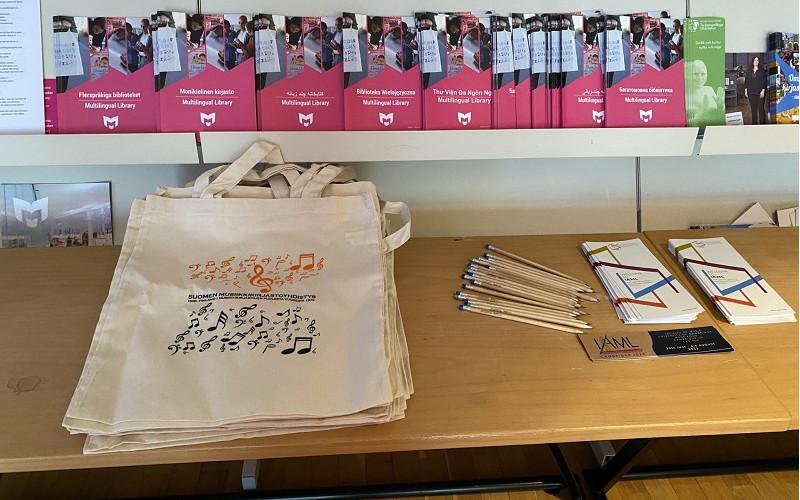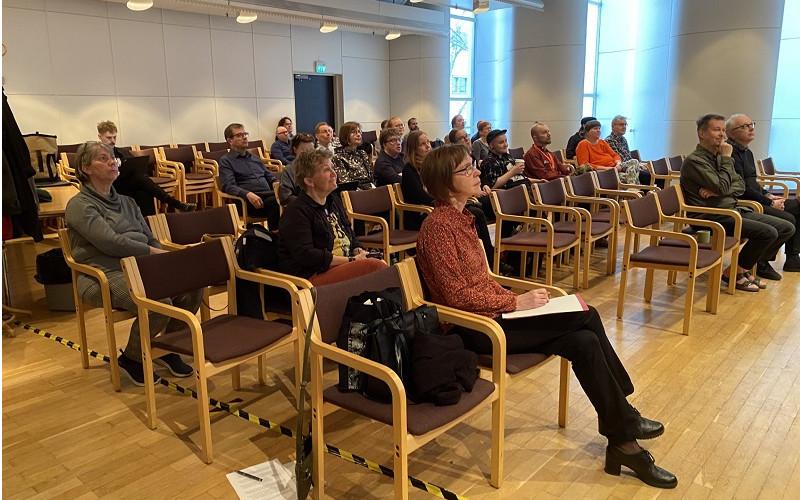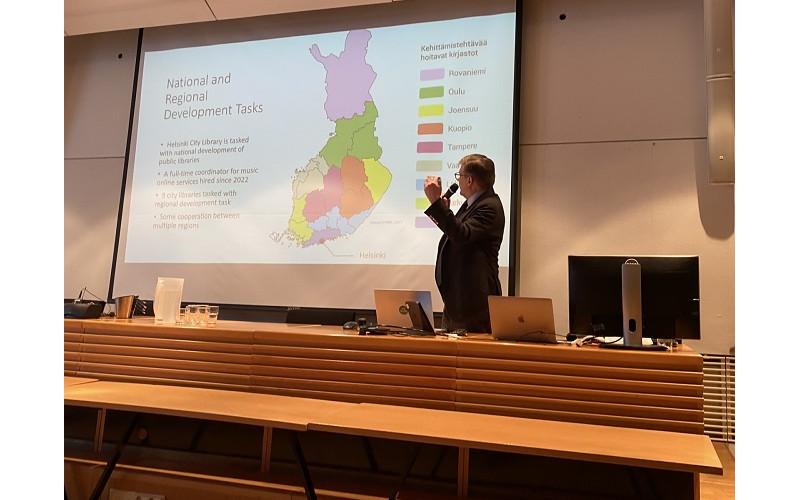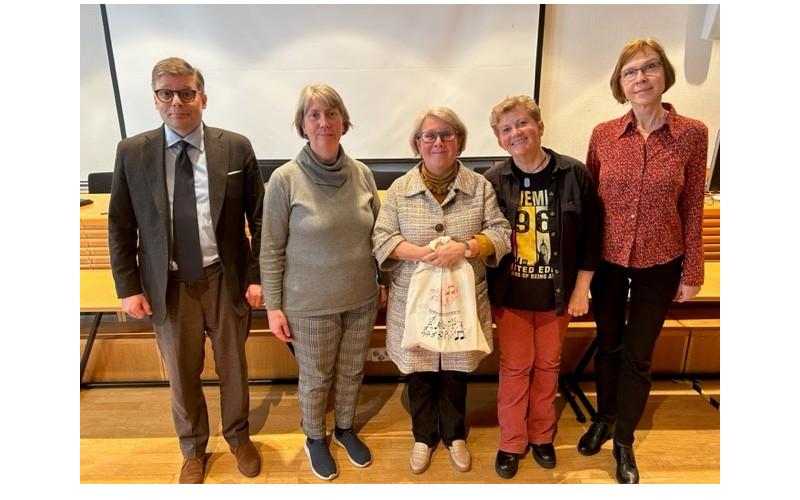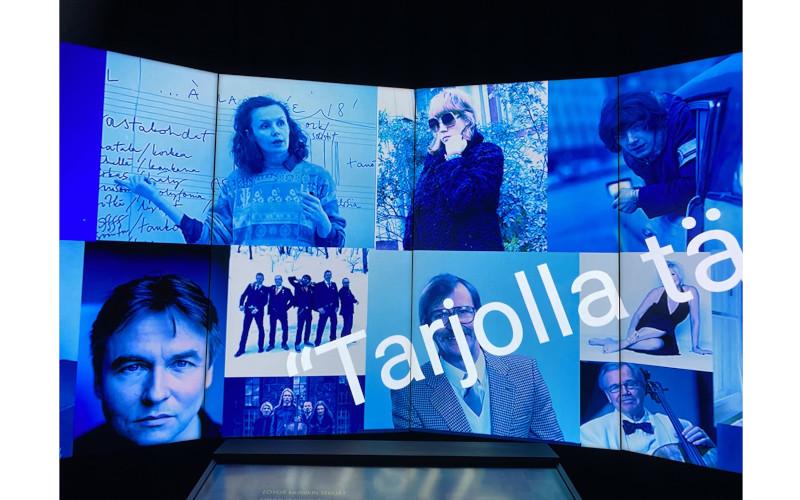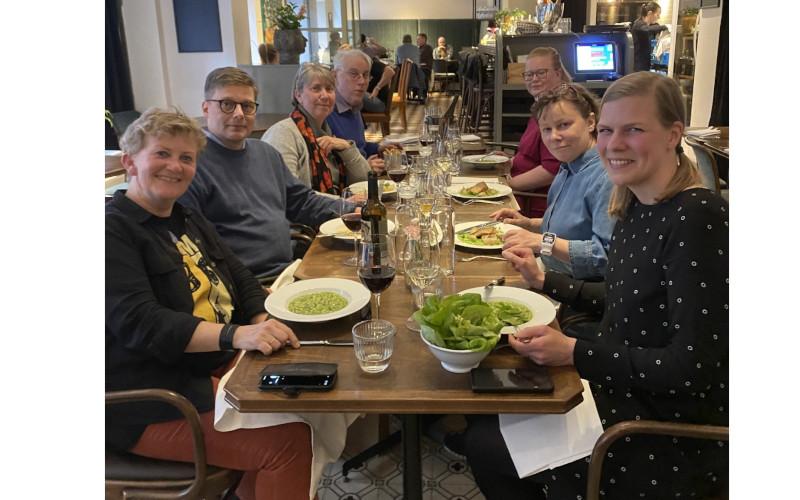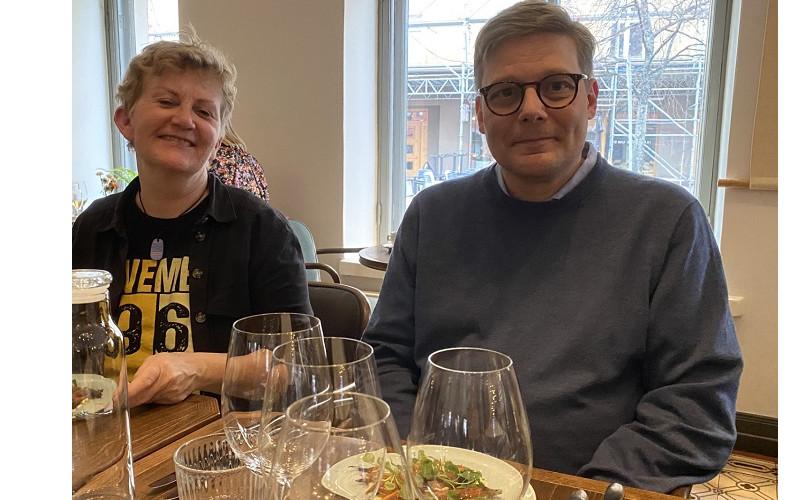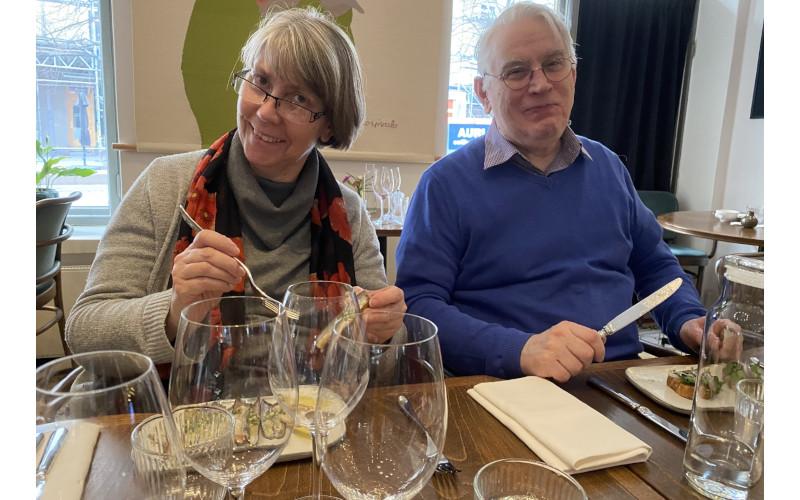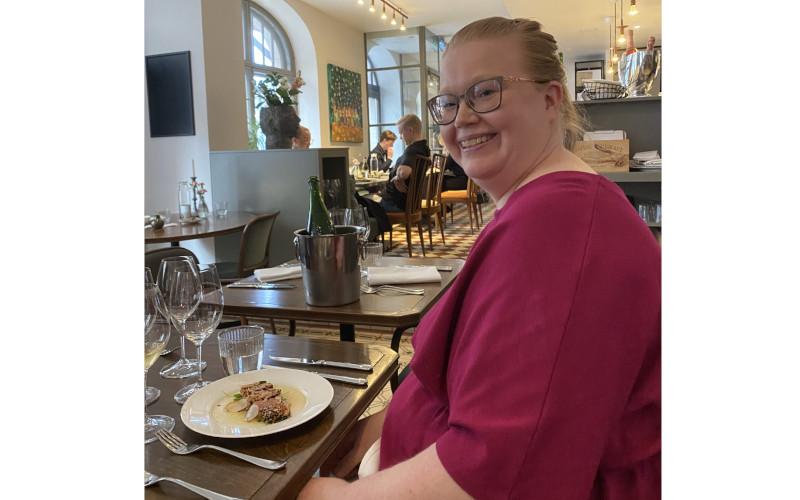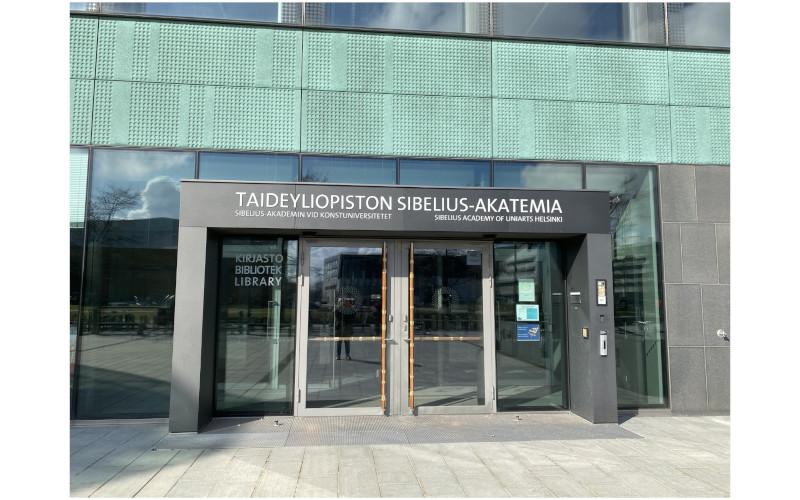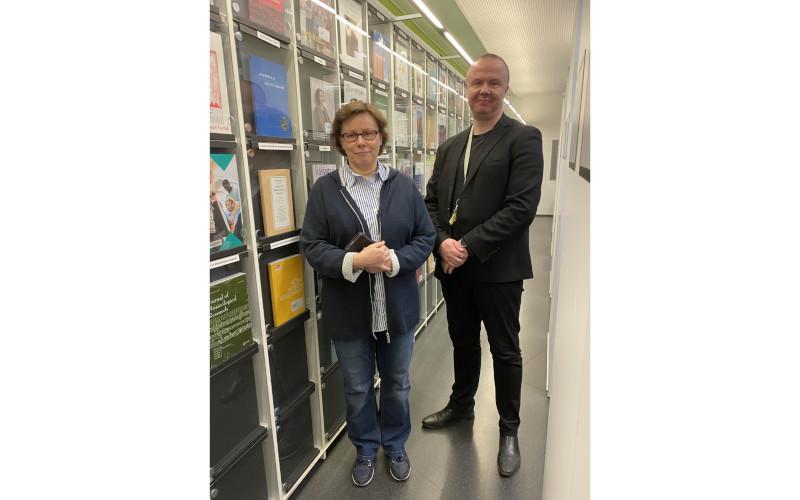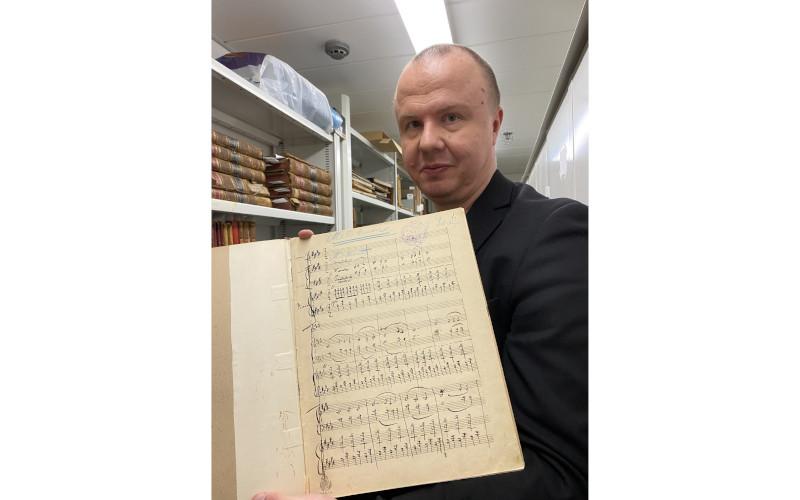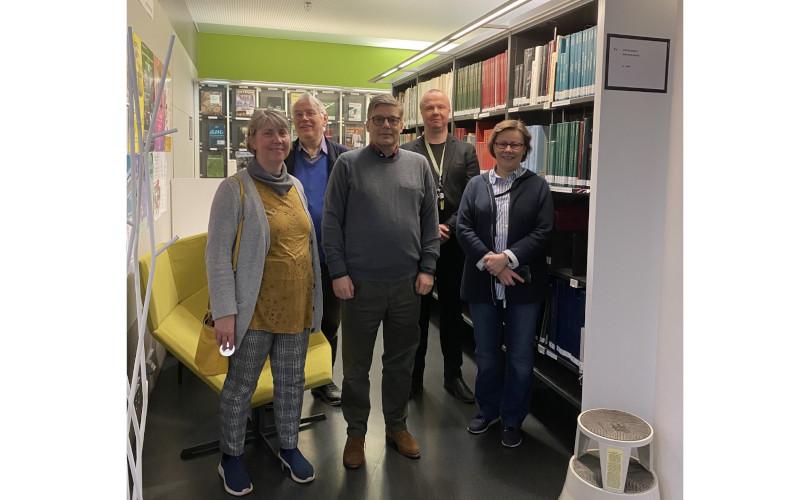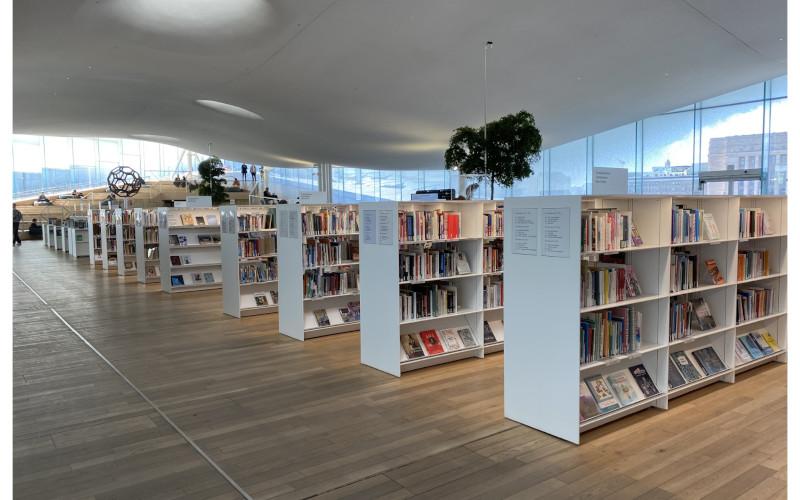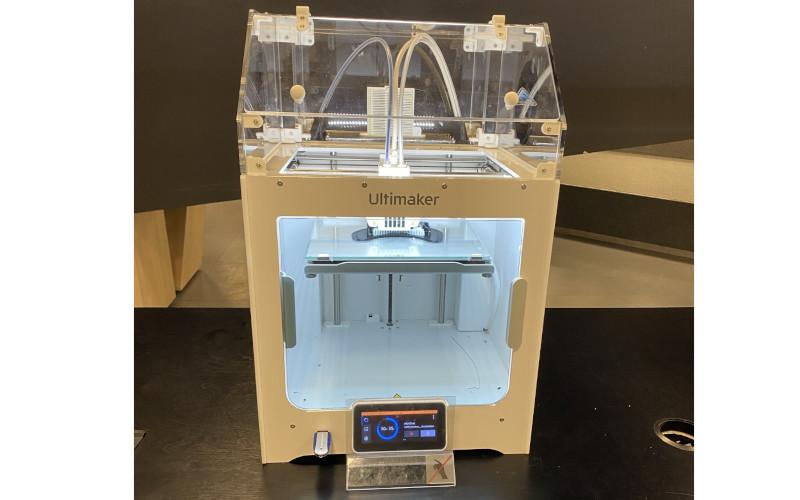I had the great pleasure to attend the annual Spring Seminar with the Finnish IAML Branch in beautiful Helsinki 27-28 April 2023. The Chair of the Branch, Jaska Järvilehto, also invited the Chairs of the national branches in Norway, Tone Nøtvik Jakobsen; in Sweden, Gunnel Jönsson and in Estonia, Heidi Heinmaa.
Each Chair presented their respective Branch and I talked about IAML, with a focus on the twenty-four national branches. During my presentation I took the opportunity to congratulate the Finnish IAML Branch on its many achievements, for example the impressive number of branch publications, not least composer biobibliographies. Later during the day Jaakko Lind introduced his new book, Yrjö Mannersalo – Muusikon muotokuva (PDF) (Yrjö Mannersalo - a portrait of a musician). Another newly published book by the Finnish IAML Branch is In a magical place - the unknown future of music libraries. I also mentioned the establishment of the Libraries in Music Teaching Institutions Working Group, Muska, as an important accomplishment. In the afternoon the Working Group presented its compilation of open access material on music information searching. Other good news worth mentioning was the revival of the national branch journal Intervalli.
Then followed a panel discussion with the guests from abroad, led by Jaska. The discussion started with general questions about the current state of music libraries and music librarianship. At the end of the discussion Jaska played devil’s advocate and questioned whether there still is a need for music librarians and music library associations. I believe the panel managed to convince the audience that this was indeed the case. It was not difficult since there were only friendly colleagues in the room! Around twenty-five members attended the Spring Seminar, which continued in Finnish in the afternoon.
Since I would not understand the presentations after lunch, I left the Seminar and visited the Music Museum Fame with the Finnish Music Hall of Fame. The Museum opened just before the outbreak of the pandemic, but now things had started to look brighter. With the help of advanced technology, the museum offers the visitors new forms of “musical immersion”, such as a virtual karaoke tour with VR glasses, where you are able to perform on some of Finland’s best-known stages. I learnt that the hallmark of Finnish music is melancholy, but also a predilection for humour. All genres are included in the museum, but there is a focus on popular music, for example the beloved revue song and the special Finnish version of the tango. There is a special exhibition on the joik – the traditional form of song of the indigenous Sámi people. A prominent “joiker” was Nils-Aslak Valkeapää. His debut album in 1968 introduced traditional Sámi music to the general public in Finland. He has a profound influence on younger generations of Sámi musicians. The following classical composers are represented in the Finnish Music Hall of Fame: Jean Sibelius, Einojuhani Rautavaara, Oskar Merikanto, Toivo Kuula and Kaija Saariaho. As you know, Finland is also known for having a long line of famous conductors and those included in the Hall of Fame are: Jorma Panula, Esa-Pekka Salonen and Susanna Mälkki. I should add that these honorary awards have only been given out since 2020.
In the evening Jaska took us on a very nice guided walking tour through the city and we ended up at a restaurant called Sikke's. This turned out to be a very good choice. The food was excellent and we spent a lovely time together.
The following day Maaria Harviainen and Tommi Harju welcomed us to the library (the Töölö Campus Library) of the internationally renowned Sibelius Academy, founded in 1882. The Academy, as well as the library, is situated in the Helsinki Music Centre, inaugurated in 2011. The Sibelius Academy merged with the Academy of Fine Arts and the Theatre Academy and formed the University of the Arts in 2013. The formerly independent libraries merged into the Uniarts library in 2017.
We were also given a guided tour of Helsinki Central Library Oodi. The library has a stunning architecture and was selected Public Library of the Year by IFLA in 2019. The actual library is situated on the third floor. The library management had chosen not to offer any kind of sound recordings. The Finnish IAML Branch tried to influence this decision, but with no success. The collection of printed music is quite good however, according to Jaska. On the two other floors you find a restaurant, a cinema, a concert hall, a tourist information centre, music studios (with a possibility to borrow instruments), work stations, game-rooms, a large makerspace with all sorts of equipment, etc. Oodi is a popular meeting point for all ages, centrally situated in the city.
I would like to thank Jaska Järvilehto very much for inviting representatives from other Nordic IAML branches and from Estonia to the Spring Seminar with the Finnish IAML Branch. Perhaps this was the beginning of a revival of the Balto-Nordic network that was so active around twenty years ago? At the online meeting with IAML’s national representatives on 9 May we were discussing that regional meetings could vitalize our organization. I believe it could be a very fruitful way forward.
- Like Facebook
- Partager sur Facebook
- Identifiez-vous pour poster des commentaires


